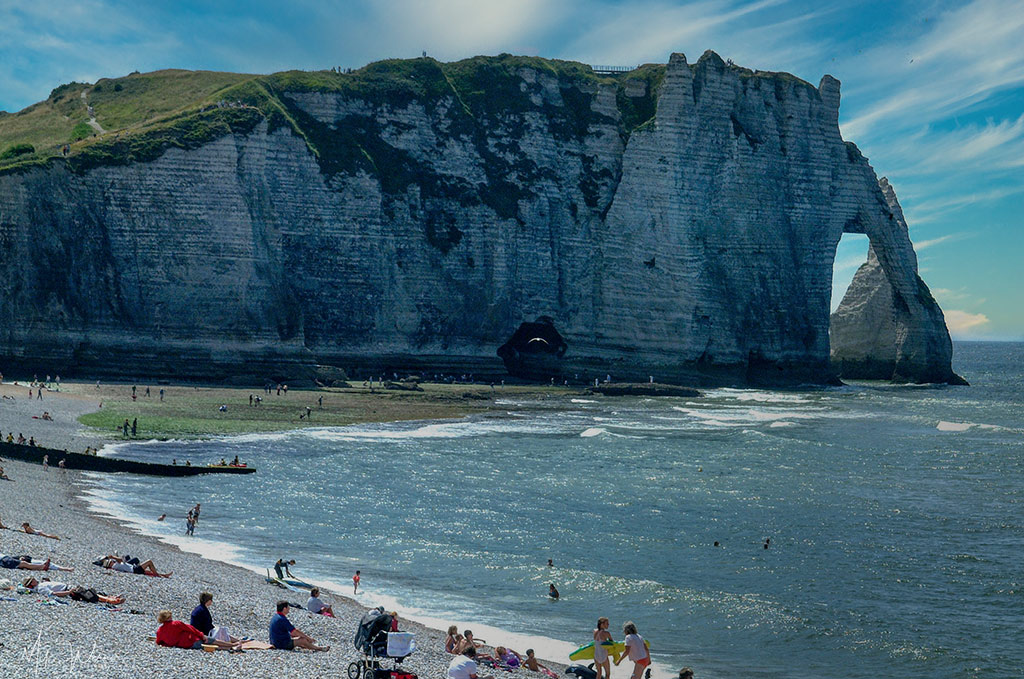This page forms part of a series of pages dedicated to the many artists who worked in Etretat. A full list of all the artists with a link to their works can be found at the bottom of this page.
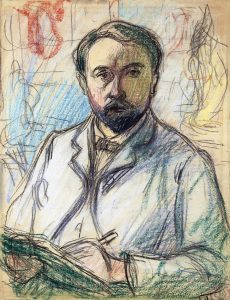
Movements: Post-Impressionists
Claude-Emile Schuffenecker (1851 – 1934) was a French Post-Impressionist artist, painter, art teacher and art collector. A friend of Paul Gauguin and Odilon Redon, and one of the first collectors of works by Vincent van Gogh, Schuffenecker was instrumental in establishing The Volpini exhibition, in 1889.
His own work, however, tends to have been neglected since his death—and even worse, recent season campaigns in the media have reactivated resentments virulent since the late 1920s, when Schuffenecker was suspected to have imitated the work of other contemporary artists, among them, Van Gogh.
Claude-Emile Schuffenecker, son of Nicolas Schuffenecker (1829–1854) and Anne Monnet (1836–1907) was born in Fresne-Saint-Mames (Haute-Saone). His father, a tailor originating from Guewenheim (Alsace, today Haut-Rhin), died when Emile was little more than two years old; the same year his brother Amedee was born in Charentenay (Haut-Rhin). The widow with her two boys moved to Meudon, close to Paris, where part of her mother’s family lived, and where she had found work at a laundry. In the years to follow Emile was raised by his mother’s sister, Anne Fauconnet Monnet, and her husband Pierre Cornu in Paris, educated by the Freres des Ecoles chretiennes, and started work in his uncle’s business, a chocolate and coffee-roasting facility in the Les Halles quarter.
On 28 February 1872, Schuffenecker joined the broker Bertin, where he met Paul Gauguin; they became close friends. Both used to study the Old Masters at the Louvre, and worked at the Academie Colarossi.
By 1880, both Schuffenecker and Gauguin evidently had gained enough money to leave Bertin – just in time before the French Panama canal project began to turn into a disaster – and to try to stand on their own feet: Both opted for a career in the arts, and probably for additional income at the stock exchange. Then, in January 1882, the Paris Bourse crashed, and while Gauguin chose to remain independent, Schuffenecker decided to apply for the diploma to teach. Two years later, he was appointed to teach drawing at the Lycee Michelet in Vanves, with the painter Louis Roy as a collegial friend.
Schuffenecker died in Paris, 33 rue Olivier de Serres, and was buried at the Montparnasse cemetery on 3 August.
Click here to read Schuffenecker’s full bio on Wikipedia.
NOTE: Click on any image below for a bigger version (no new window will open).
NOTE: A black box like this one, means that there is an explanation text about today’s situation of the painting above it.
NOTE: Click on this photo icon ![]() anywhere below a painting to see a photo of what the area looks like today.
anywhere below a painting to see a photo of what the area looks like today.
NOTE: A blue box like this one, means there is an explanation or a note.
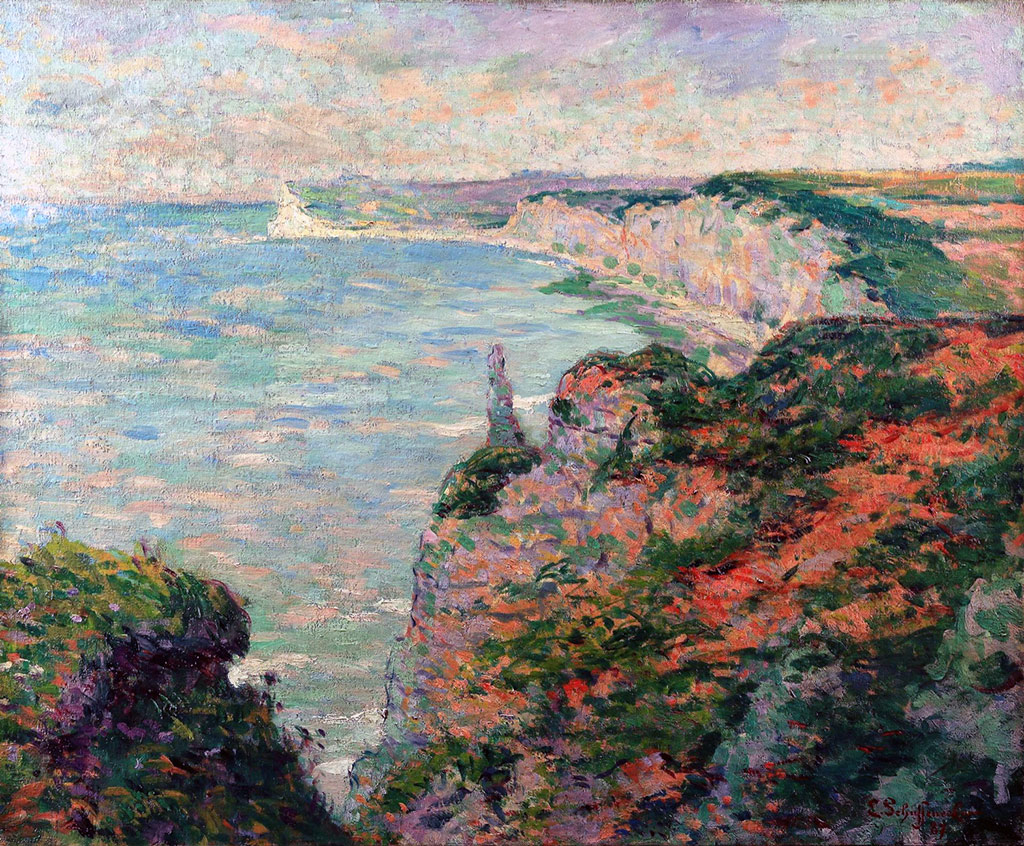
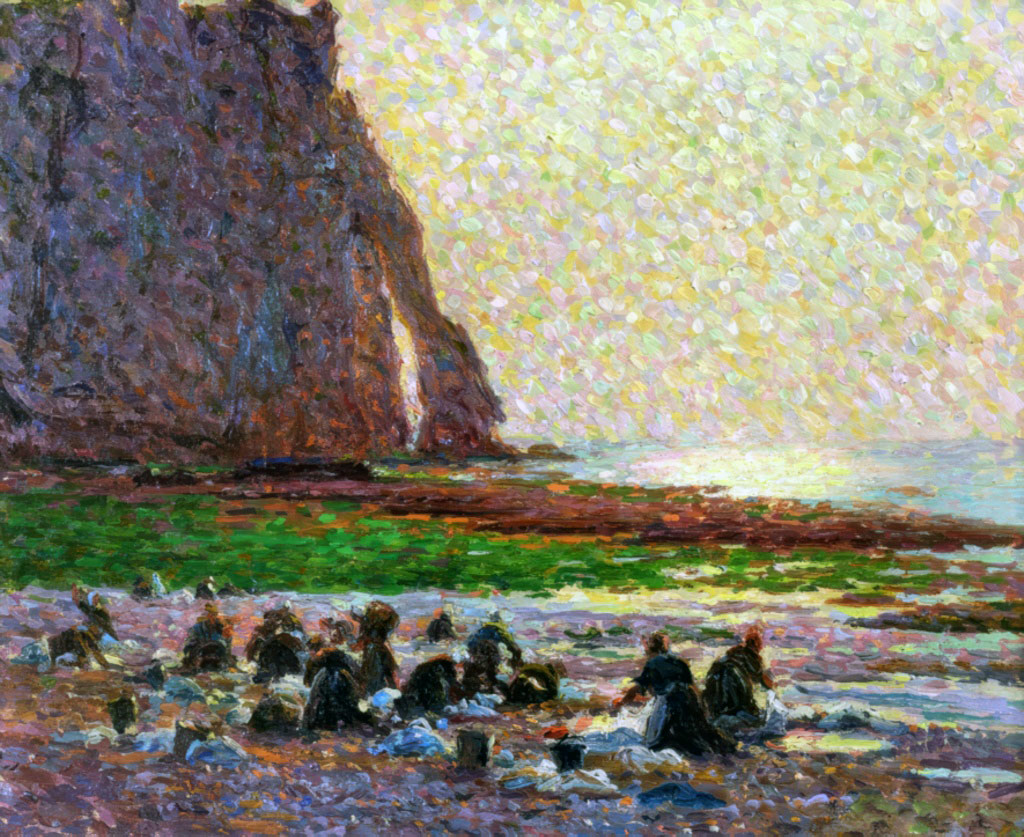
TODAY: You can see a sea arch to the right of the cliffs. It’s the Porte d’Aval, the most visible of three sea arches at Etretat. It lies to the left of the Etretat beach.
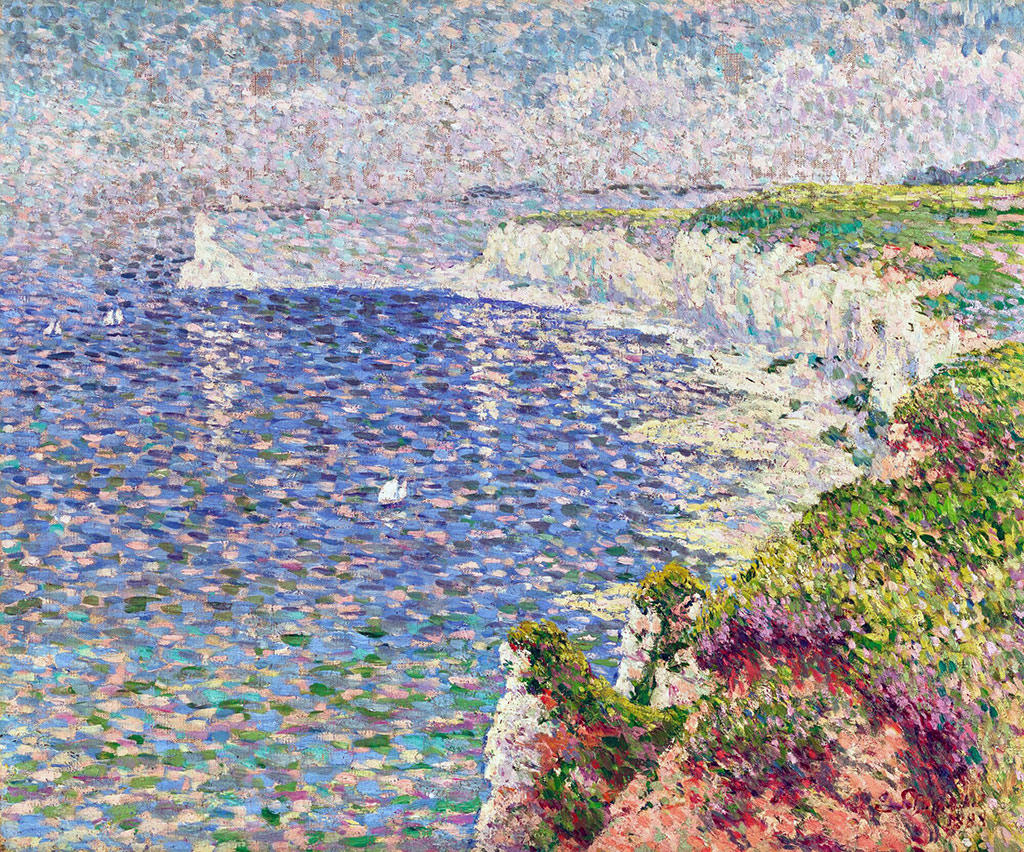
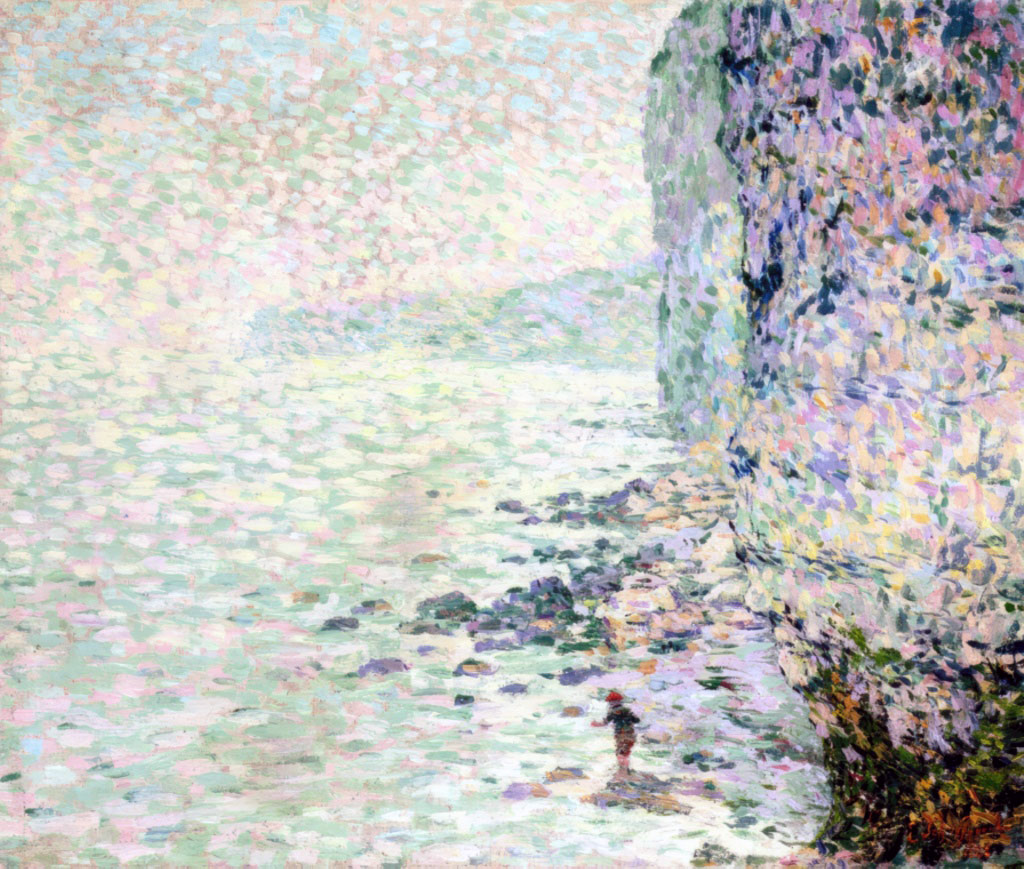
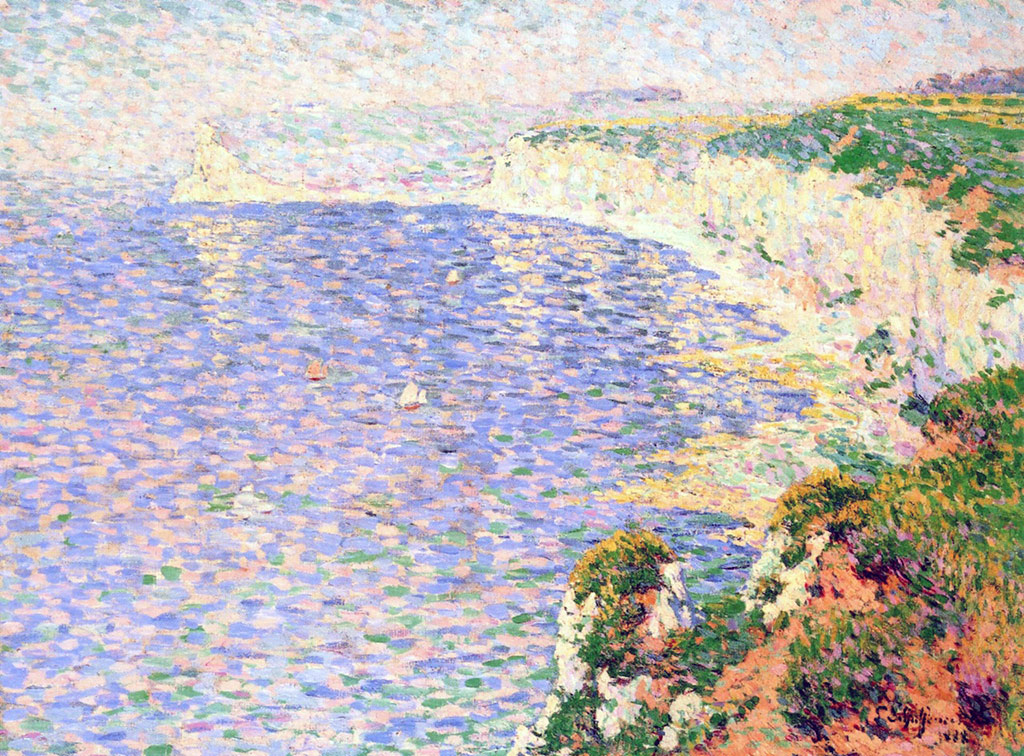
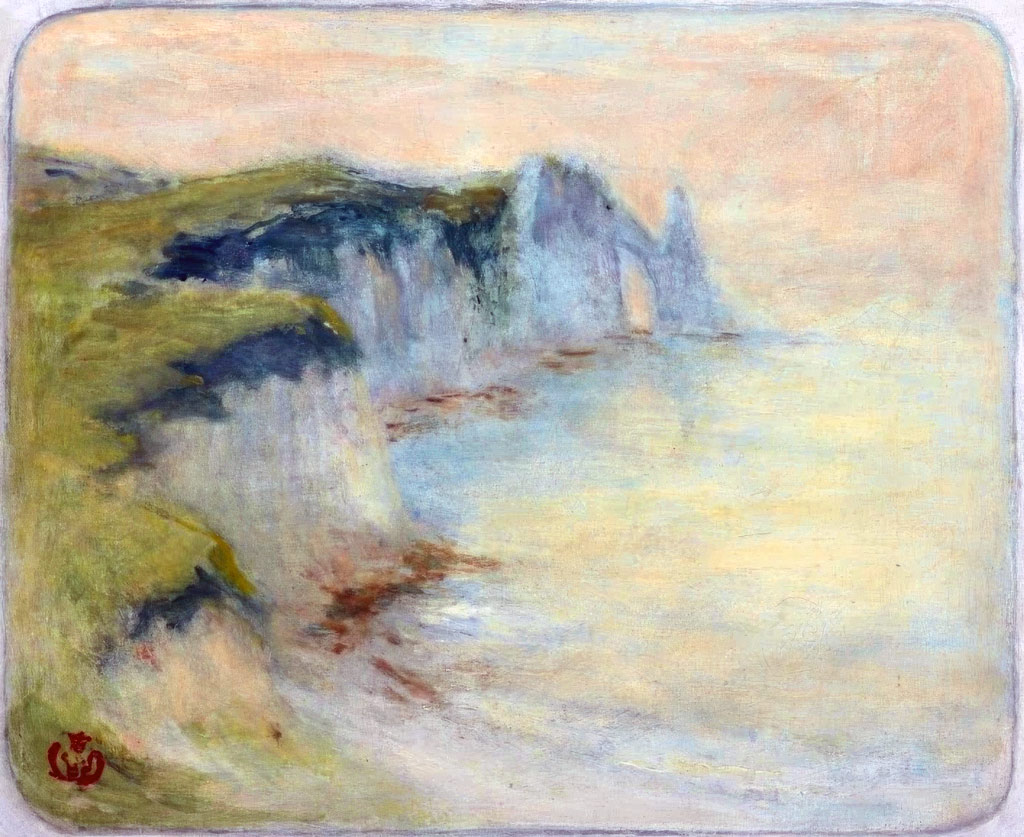
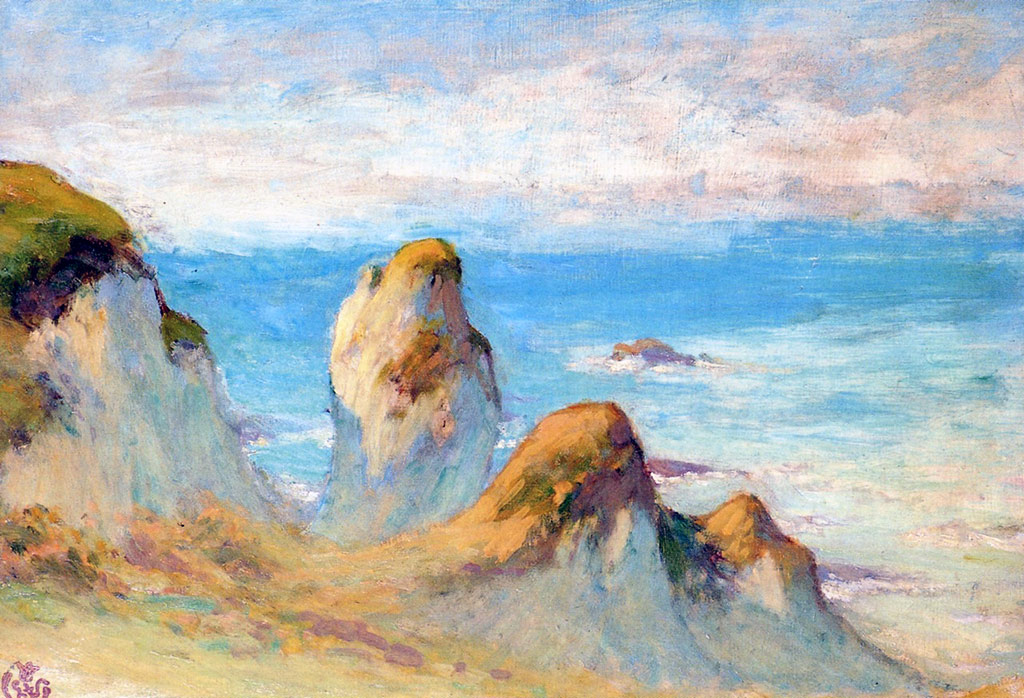
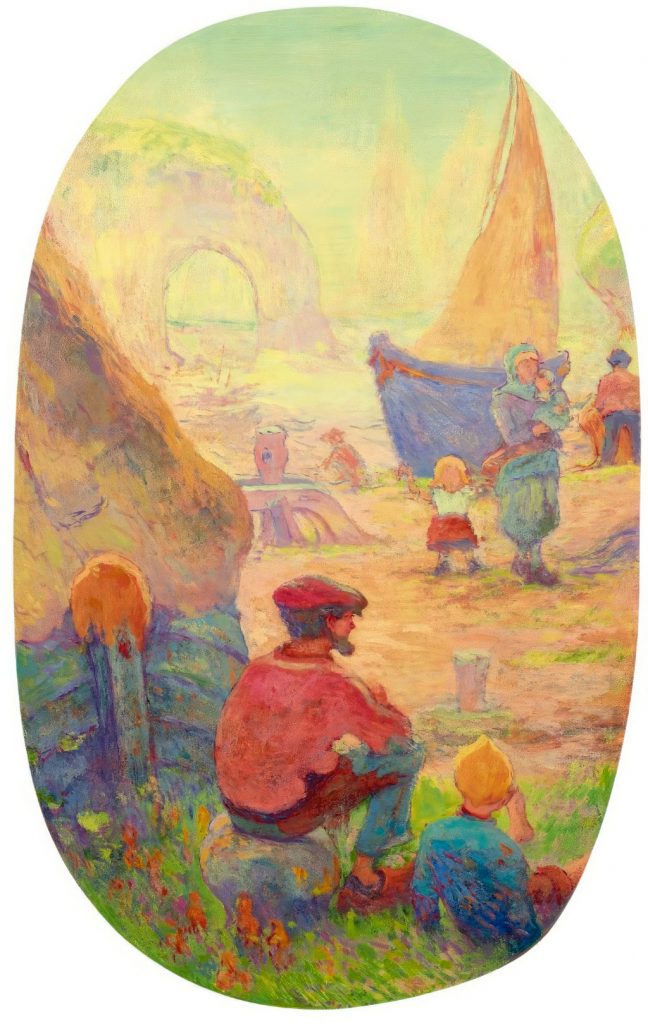
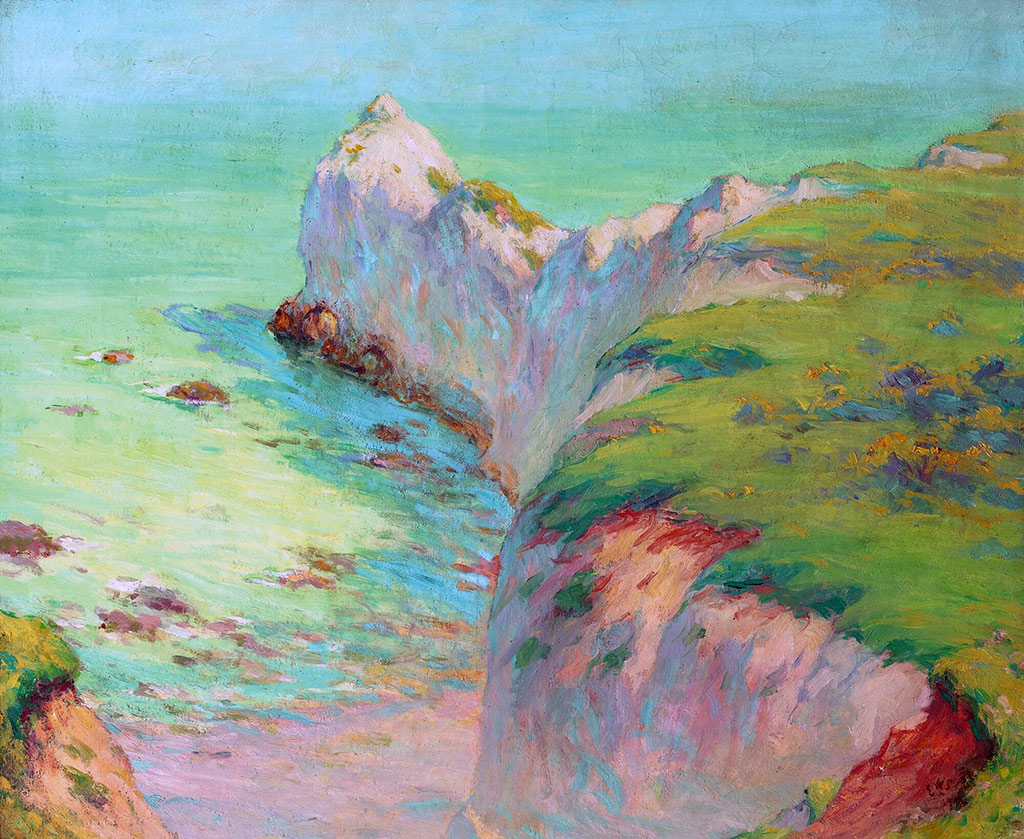
NOTE: The sea arch you see if the Porte d’Amont, a sea arch that lies to the right of the beach of Etretat.
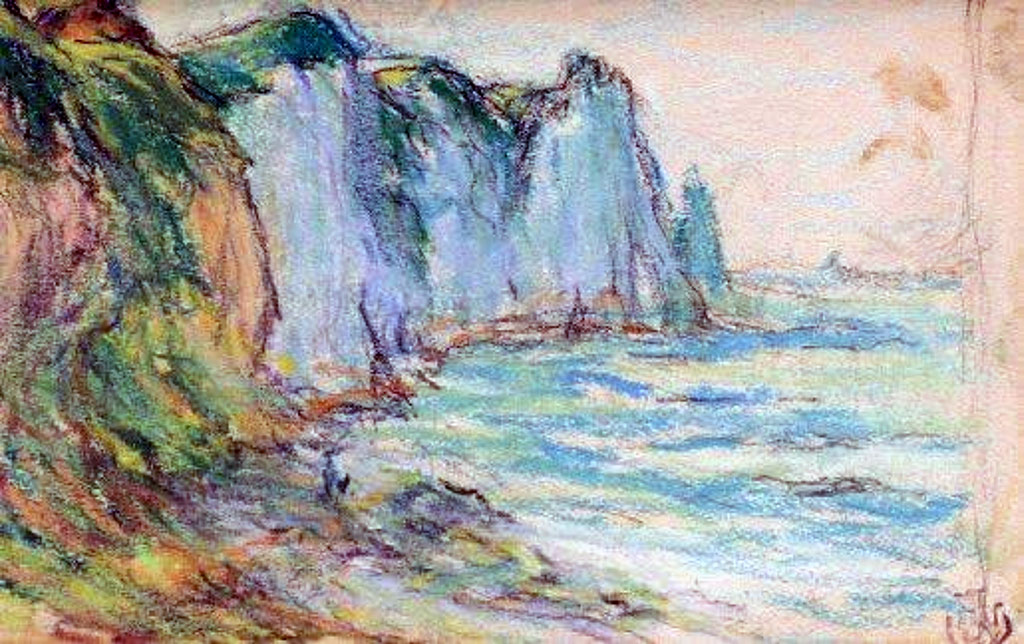
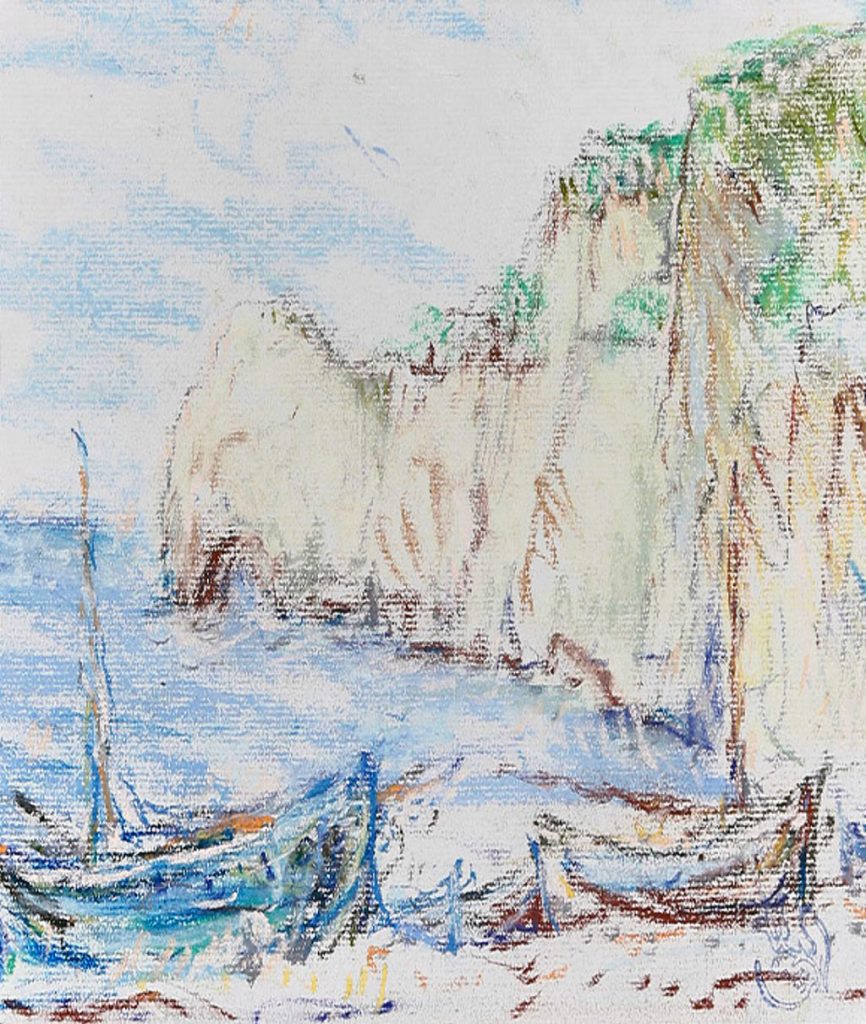
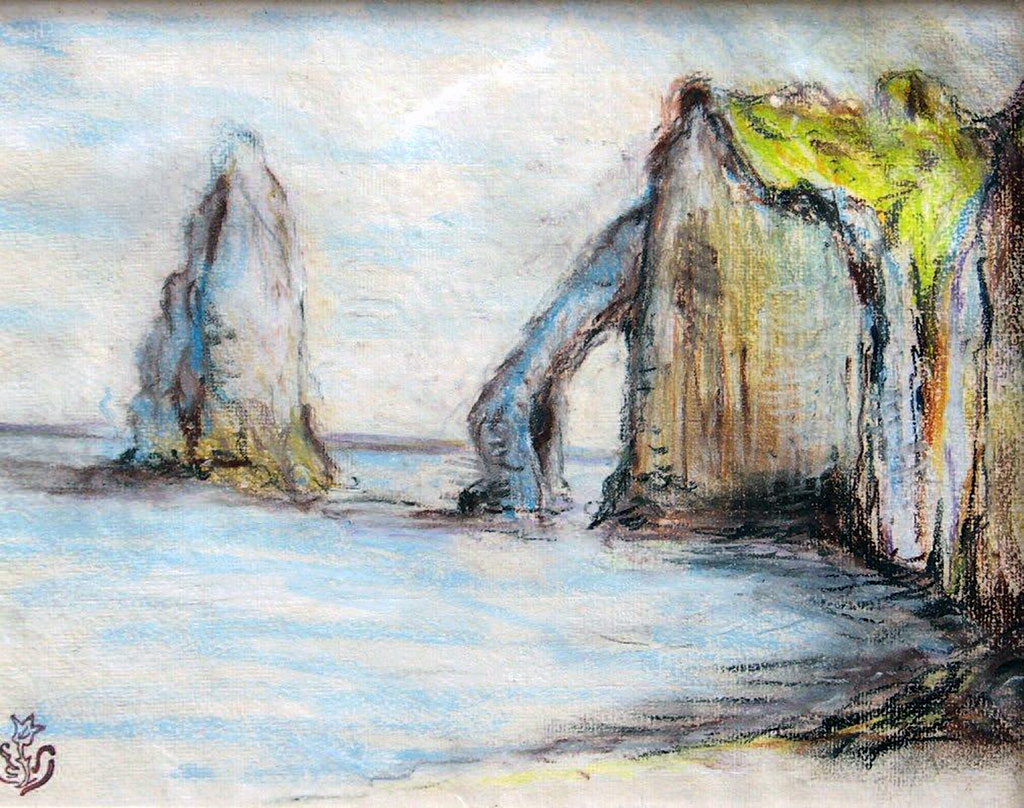
NOTE: This is the rear view of the Porte d’Aval sea arch. The rock to the left is the “Aiguille”(Needle in French).
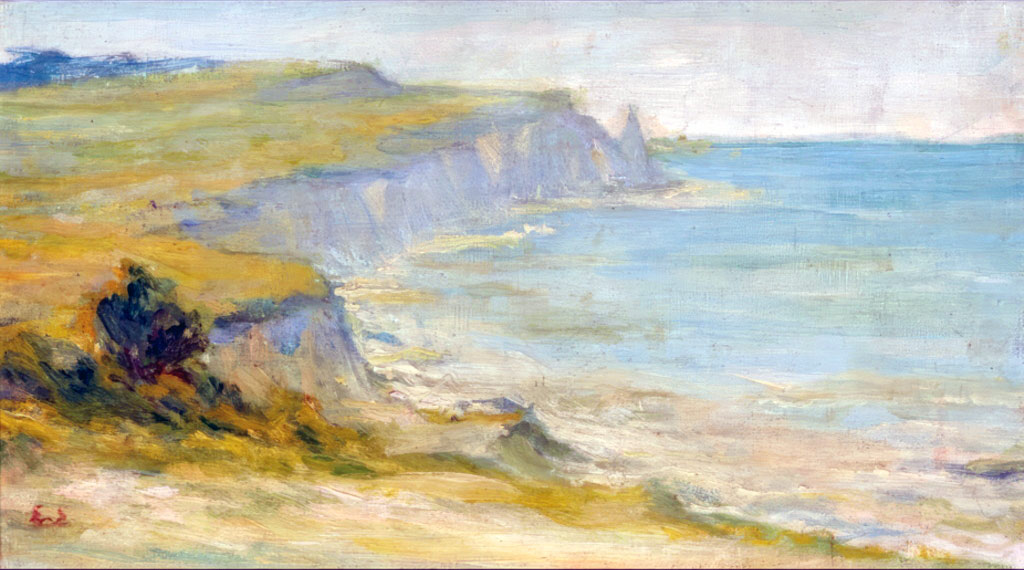
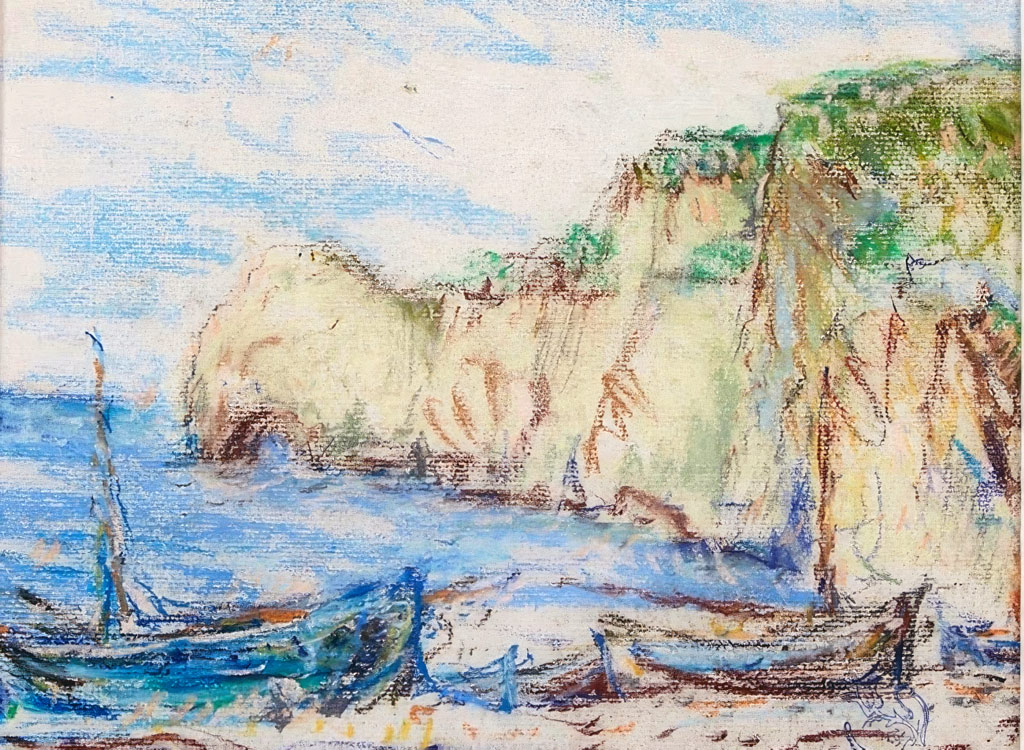
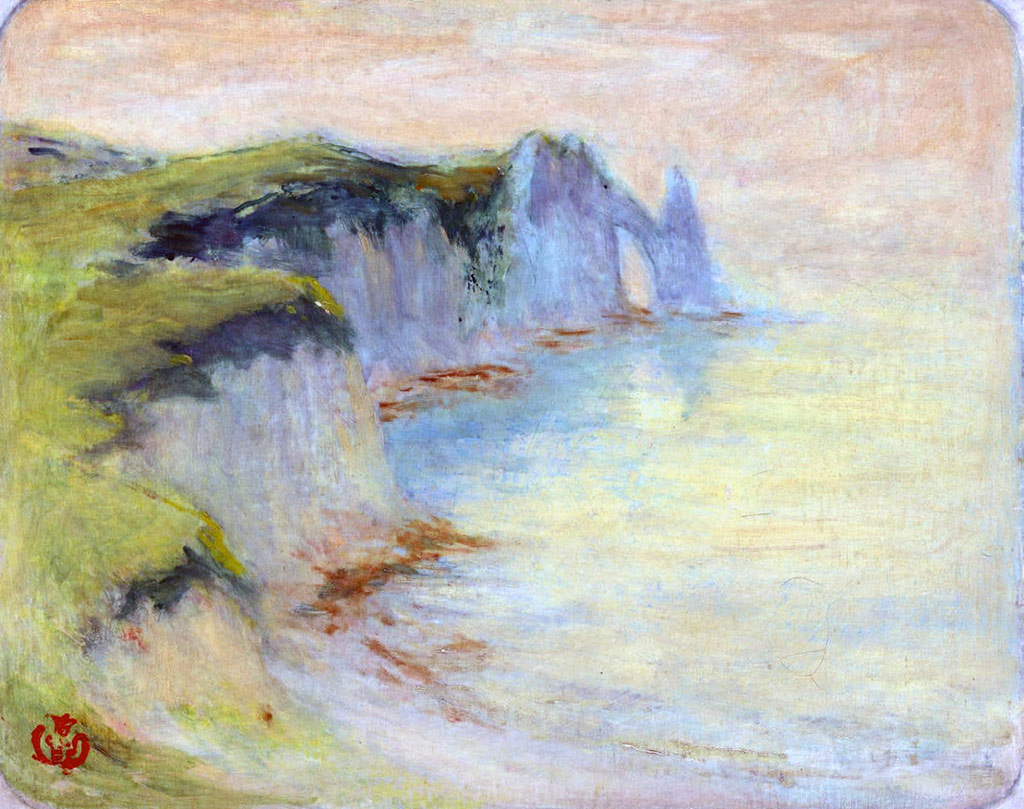
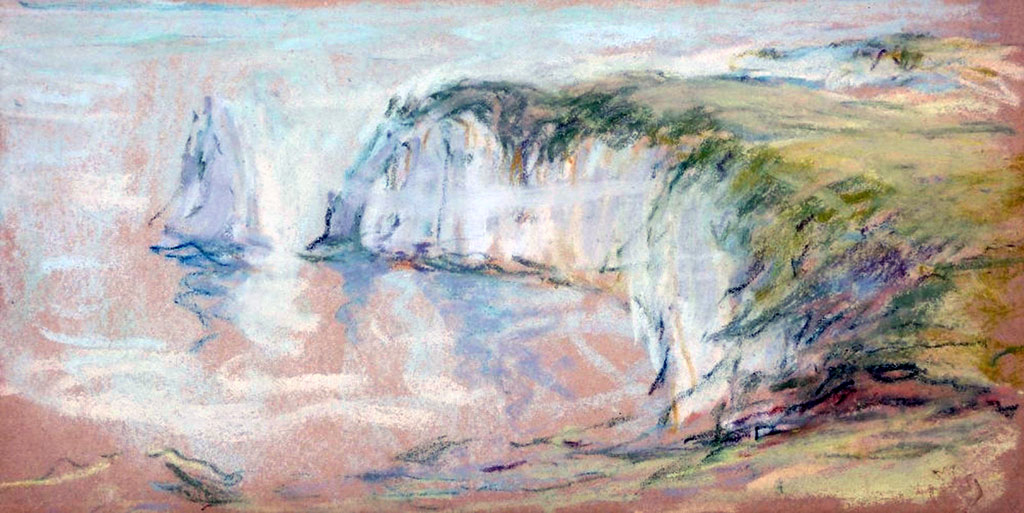
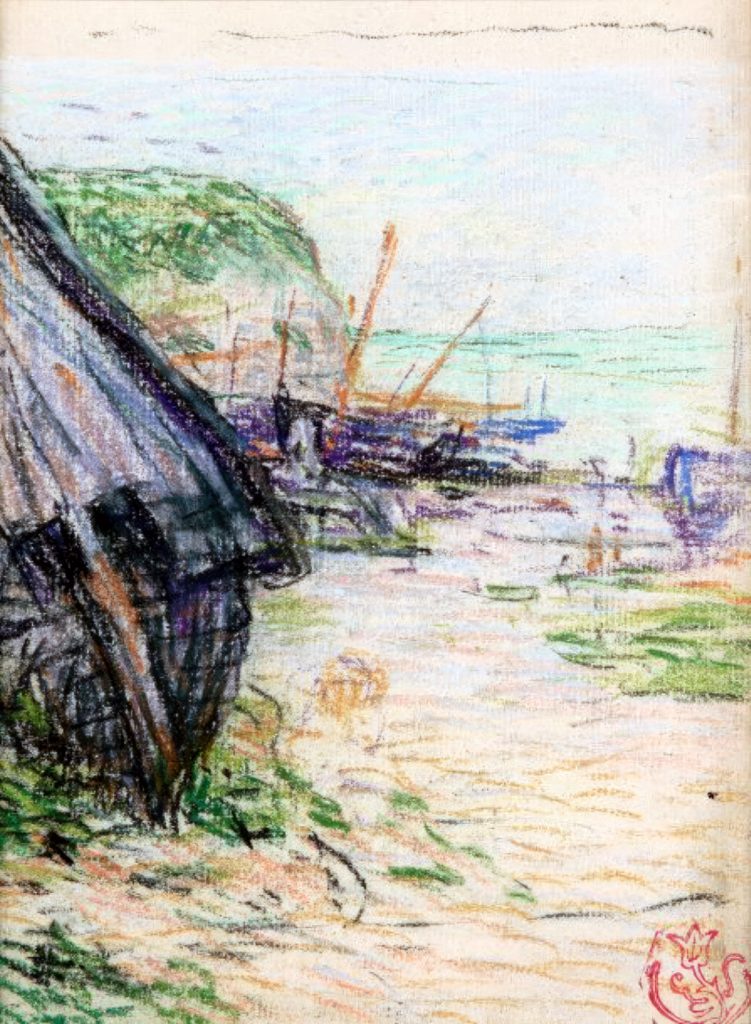
NOTE: The huts you see are caloges, a former fishing boat, covered with a roof, used to keep fishing materials dry.
Schuffenecker spent most of his artists days between Normandy, Brittany and Paris. Here are most of the places he painted in (a link “⇠” to his works will appear when published):
- Brittany
- Normandy
Etretat is the second most popular and visited place in Normandy (the first being Mont Saint-Michel). And since it was popular, many artists came here to be inspired by its nature and scenic environments. Here is a list of artists who worked in Etretat (a link “⇠” to their work will appear when published).
- 🇷🇺 Bogolyubov, Alexey (Alexei) ⇠
- 🇫🇷 Boudan, Louis *⇠
- 🇫🇷 Boudin, Eugene-Louis ⇠
- 🇫🇷 Braque, Georges ⇠
- 🇫🇷 Burel, Henry E. ⇠
- 🇺🇸 Butler, Theodore Earl ⇠
- 🇫🇷 Caillebotte, Gustave ⇠
- 🇫🇷 Corot, Jean-Baptiste Camille ⇠
- 🇫🇷 Courbet, Gustave ⇠
- 🇫🇷 Daubigny, Charles-Francois ⇠
- 🇫🇷 de Saint-Delis, Rene ⇠
- 🇫🇷 Friesz, Othon ⇠
- 🇫🇷 Garneray, Ambroise Louis ⇠
- 🇫🇷 Gudin, Theodore ⇠
- 🇫🇷 Hoguet, Charles ⇠
- 🇫🇷 Huet, Paul ⇠
- 🇺🇸 Inness, George ⇠
- 🇫🇷 Isabey, Eugene ⇠
- 🇳🇱 Jongkind, Johan ⇠
- 🇬🇧 Kay, James ⇠
- 🇫🇷 Kuwasseg, Charles Euphrasie ⇠
- 🇫🇷 Lebasque, Henri ⇠
- 🇫🇷 Lebourg, Albert ⇠
- 🇬🇧 Leitch, Richard Principal ⇠
- 🇫🇷 Lepoittevin, Eugene ⇠
- 🇫🇷 Letellier, Emile-Andre ⇠
- 🇫🇷 Loiseau, Gustave ⇠
- 🇫🇷 Matisse, Henri ⇠
- 🇫🇷 Maufra, Maxime ⇠
- 🇫🇷 Maze, Paul ⇠
- 🇬🇧 Meadows, Arthur Joseph ⇠
- 🇫🇷 Monet, Claude
- 🇫🇷 Noel, Alexandre Jean
- 🇷🇺 Polenov, Vasily
- 🇫🇷 Roullet, Gaston
- 🇫🇷 Schuffenecker, Claude-Emile
- 🇫🇷 Signac, Paul
- 🇨🇭 Vallotton, Felix
- 🇫🇷 Vollon, Antoine
NOTE: You can subscribe to our new articles by entering your email address in the box on the right column (or at the very bottom of this article) and clicking on the button “Subscribe”.
You will need to check your incoming emails and validate your subscription. If you can’t see an email from us, check your Spam folder. Without validating your email address, you will not get notifications from us. WE WILL NEVER GIVE YOUR EMAIL ADDRESSES TO ANYONE!
Related Posts
- 95
 Gustave Loiseau was a French Post-Impressionist painter, remembered above all for his landscapes and scenes of Paris streets. However he did paint a lot in Normandy, Here are his many works for Etretat and surrounding Saint-Jouin.
Gustave Loiseau was a French Post-Impressionist painter, remembered above all for his landscapes and scenes of Paris streets. However he did paint a lot in Normandy, Here are his many works for Etretat and surrounding Saint-Jouin. - 93
 Henri Lebasque was a French post-impressionist painter who painted throughout France. He worked on the decorations at the theatre of the Champs-Elysées and of the Transatlantique sealiner. He was friends with other artists like Raoul Dufy, Louis Valtat, and Henri Manguin. Here are the two paintings of his we found…
Henri Lebasque was a French post-impressionist painter who painted throughout France. He worked on the decorations at the theatre of the Champs-Elysées and of the Transatlantique sealiner. He was friends with other artists like Raoul Dufy, Louis Valtat, and Henri Manguin. Here are the two paintings of his we found… - 89
- 89
 Albert Lebourg (1849 – 1928), birth name Albert-Marie Lebourg, also called Albert-Charles Lebourg and Charles Albert Lebourg, was a French Impressionist and Post-Impressionist landscape painter of the Rouen School (l'Ecole de Rouen). Member of the Societe des Artistes Francais, he actively worked in a luminous Impressionist style, creating more than…
Albert Lebourg (1849 – 1928), birth name Albert-Marie Lebourg, also called Albert-Charles Lebourg and Charles Albert Lebourg, was a French Impressionist and Post-Impressionist landscape painter of the Rouen School (l'Ecole de Rouen). Member of the Societe des Artistes Francais, he actively worked in a luminous Impressionist style, creating more than… - 88
 Eugène Lepoittevin was a French landscape painter, lithographer and caricaturist. He was appointed as Peintre de la Marine for the French Ministry of Defence in 1849. His work is exhibited in many museums in France and at the Victoria & Albert Museum in London. Here are his paintings he made…
Eugène Lepoittevin was a French landscape painter, lithographer and caricaturist. He was appointed as Peintre de la Marine for the French Ministry of Defence in 1849. His work is exhibited in many museums in France and at the Victoria & Albert Museum in London. Here are his paintings he made…



